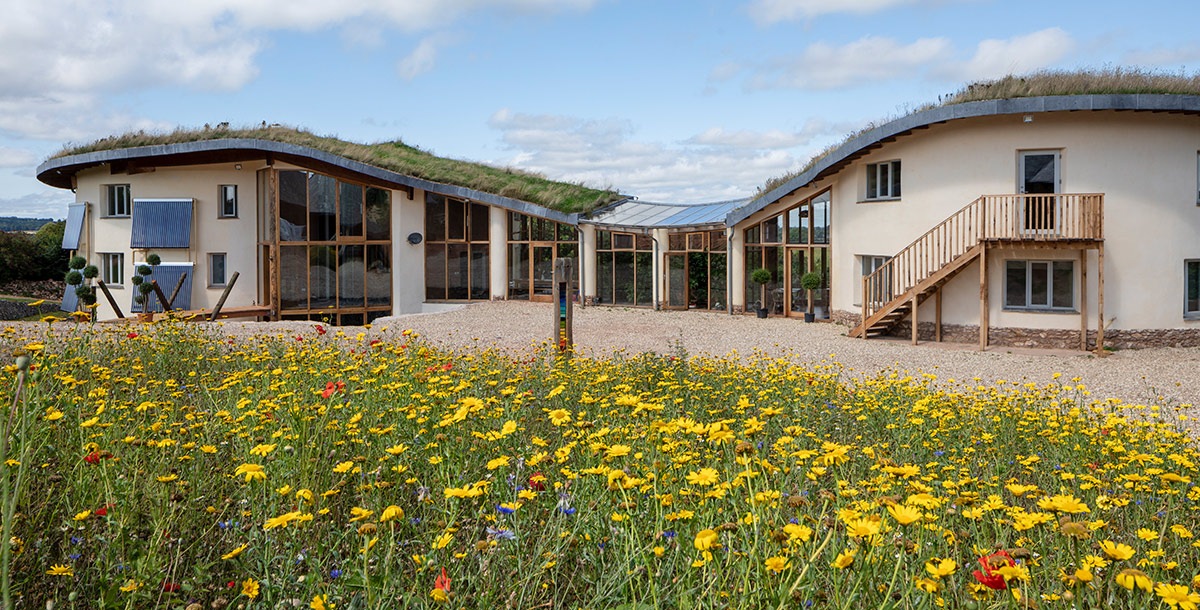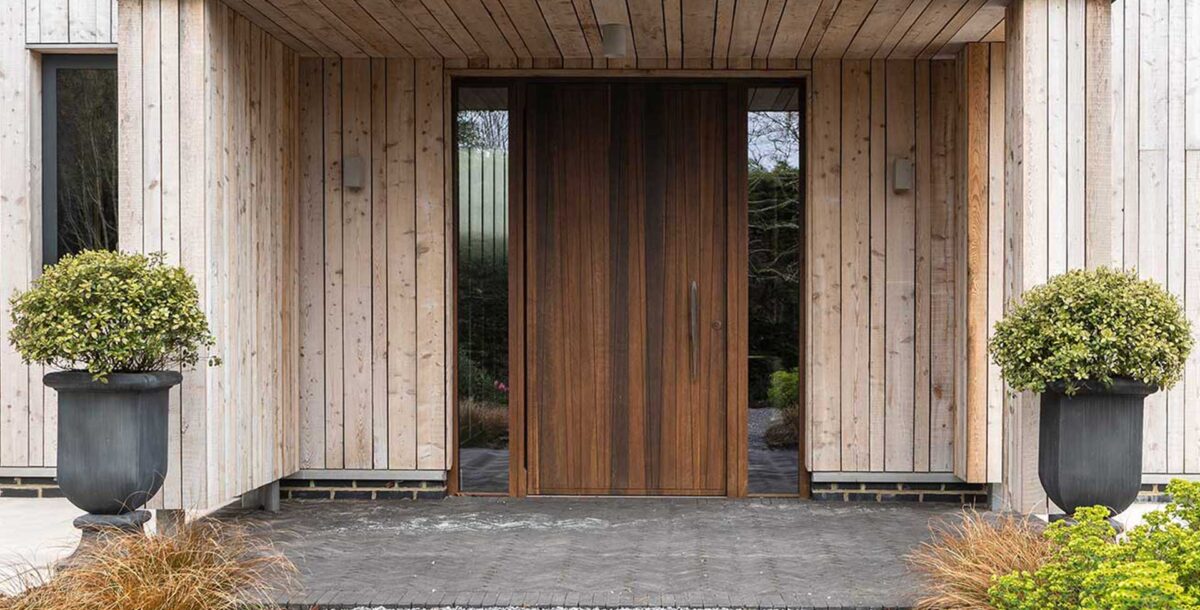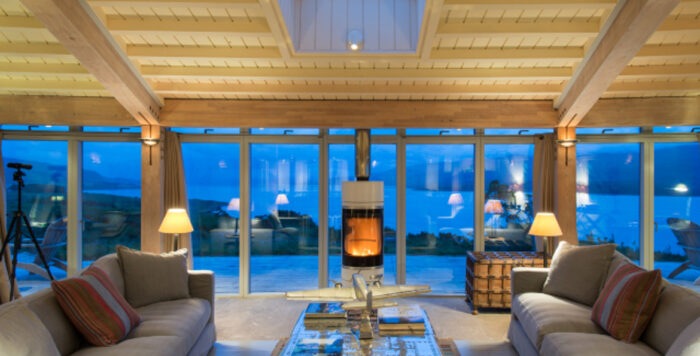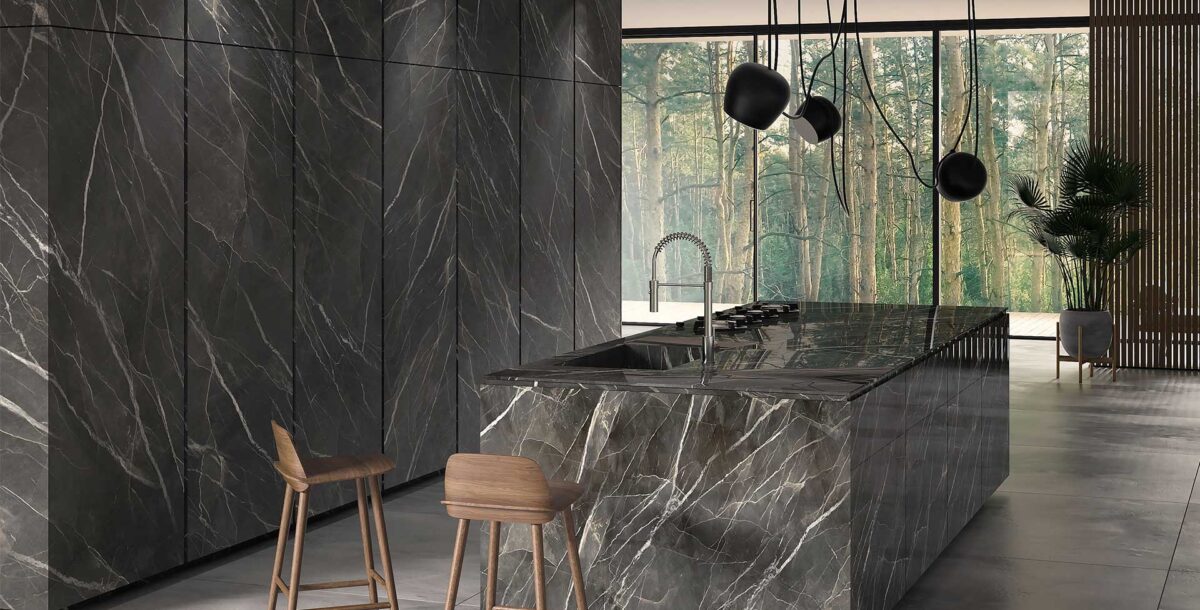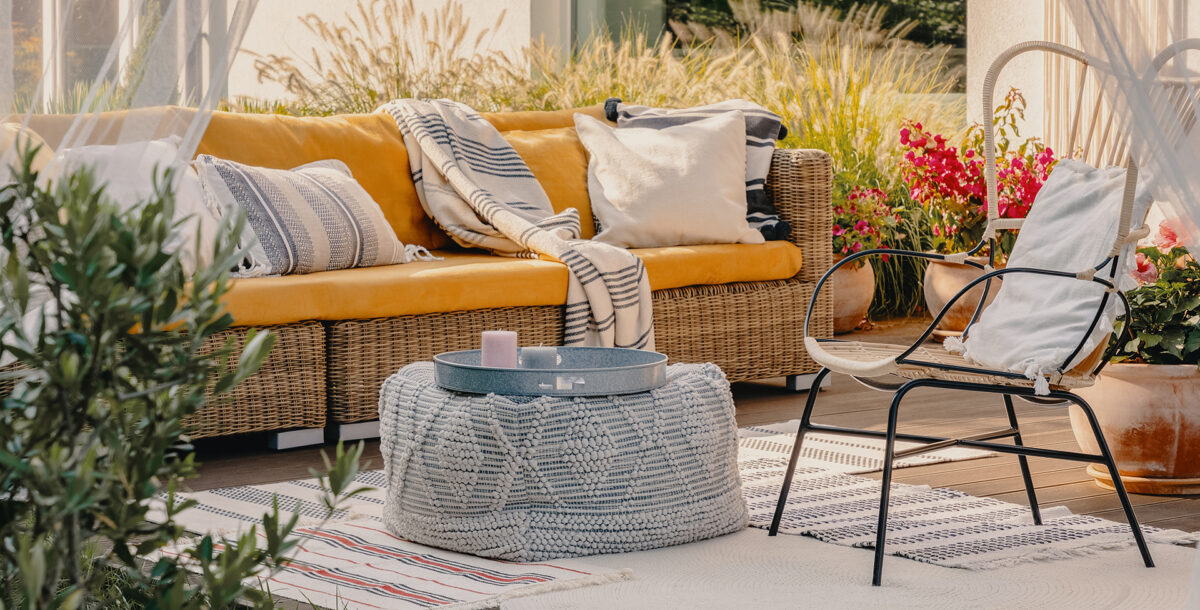Why build with natural materials?
The likes of stone, timber and clay may have a low environmental impact, but are they a good choice in the modern world?
Natural sources can provide almost every component required to build a house. Wood can be turned into boards and beams, including highly engineered glulam (glued laminated timber) plus, cladding, flooring and roofing. Straw bales, rammed earth and cob – a mixture of clay, straw and sometimes lime – have all been used for self-builds.
Timber processed into fibres is made into insulation. The same as hemp, wool and recycled fibres from newspaper, cellulose, jute sacks and even denim. For interior finishes there are raw clay and mineral-based plasters, and mineral paints.
Design flexibility
Often natural materials have an innate beauty, and are characteristic of the local area. An example is the limestone found in the Cotswolds and the Scottish larch used in weatherboarding or shingles.
They also have a more appealing appearance than synthetic finishes – which may be an advantage when seeking permission to build. But natural materials don’t have to create the country cottage look. They can be used to create a rustic finish or a crisp, contemporary design.
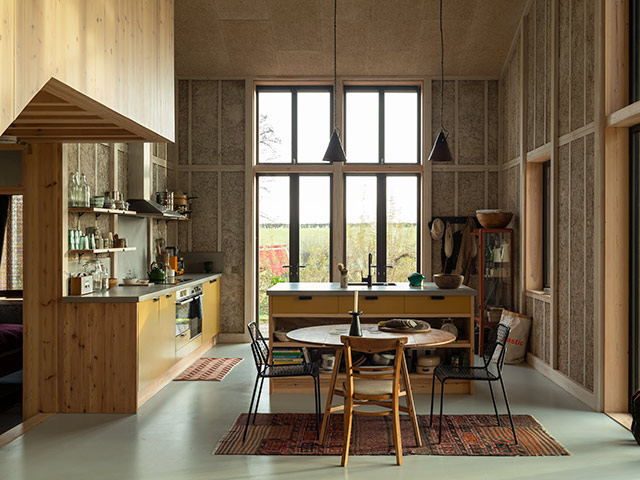
Practice Architecture used prefabricated panels infilled with hemp in this build. Photo: Oskar Proctor
Health and wellbeing
These products tend to have low toxicity. One example is natural fibre insulation, which is usually treated with low-toxicity mineral salts to reduce flammability.
Whereas synthetic foams may contain organophosphate flame retardants, which can have an adverse effect on health. Natural finishes and insulation are a rational choice for creating a healthy home – and they are nice to handle, too.
Circular economy
As long as they are responsibly sourced and processed, most natural materials have relatively low environmental impact. They do not require the amounts of energy used to create brick, concrete and steel. Instead coming from readily renewable sources.
Processing any material inevitably involves some energy use. But you can see exactly how much as responsible manufacturers record the details in Environmental Product Declarations (EPDS).
Materials such as timber and stone can be reused – possibly several times. By contrast, synthetic materials are much harder to reuse. One day you may need to dismantle or replace part or even all of your home – so it will help if it can be taken apart and be reused.
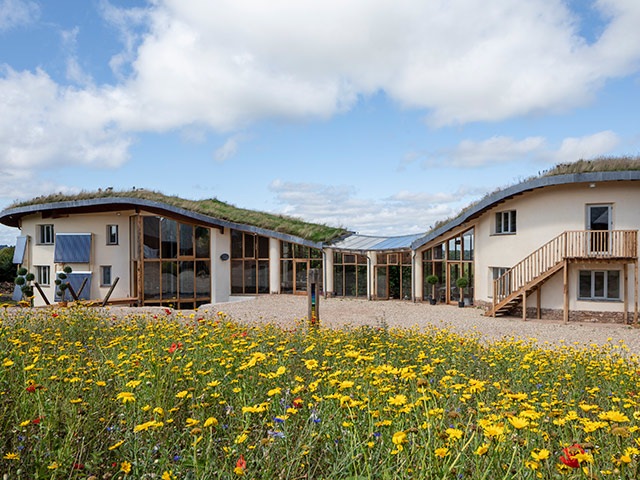
Kevin McCabe’s Grand Designs build has a glulam frame and cob walls with lime render. Photo: Mark Bolton
Structure and insulation
The most straightforward and economical natural option for housebuilding is timber. Carpentry skills are widespread, and beautiful homes have been built more or less entirely from timber and wood products, from the structure to the insulation, cladding, even interior finishes.
‘Using certified timber from sustainably managed forests is an obvious choice of material for modular and bespoke homes,’ says Oliver Rehm, the CEO of Baufritz UK. ‘Compared to cement and steel it has many advantages – it is local, renewable, recyclable, lightweight and easy to manufacture as well as being an excellent thermal insulator.’
Your home could also be built from materials such as hemp composites, earth and straw. Other than when it’s used for thatch, straw isn’t a traditional construction material. However, this is starting to change because it is an abundant byproduct, relatively cheap and easy to handle, and the hollow stems offer good insulation. Straw and hemp are also used in prefabricated panels for a more conventional approach.
If you want to get really hands on with your self-build, you can learn how to work with straw bales on a practical course such as those offered at the School of Natural Building. Natural insulation tends to be heavier, and to perform properly it may need to be thicker than synthetic versions. This is not necessarily a disadvantage – its weight reduces temperature variations and creates a quieter building.
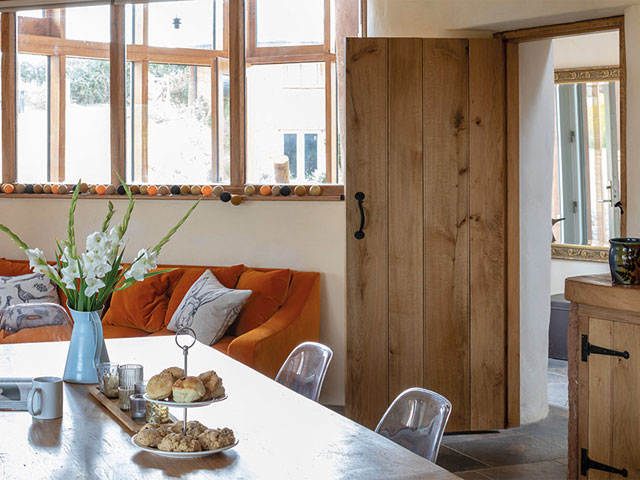
Inside the East Devon cob house from Grand Designs. Photo: Mark Bolton
Avoiding plastics
Favouring natural materials usually means using less plastic. Although choose synthetic products for a few specific jobs, such as where there is a risk of moisture. Some plastics are really worth avoiding. One of the most problematic is PVC, considered by many environmental groups to be one of the most toxic in its manufacture, use and disposal.
PVC and urethane foams are also particularly dangerous in the event of fire. Consider timber, ceramic, bamboo or linoleum for flooring instead. PVC-free windows cost more, but should last longer. PVC-free wiring is also available.
Getting help
Specialist timber frame building suppliers will design, and sometimes erect, a frame. There are also modular timber construction systems, which are often insulated with natural materials such as cellulose. Manufacturers and suppliers of natural materials are generally very enthusiastic about helping their customers get good results, and some offer moisture analysis, even on-site training.
Natural materials don’t respond well to getting soggy, so ensure your designer is confident in carrying out a moisture assessment to avoid unwanted build-up in the fabric.
Despite their generally low toxicity, natural products are not an alternative to having proper ventilation. It’s needed in all buildings to ensure a healthy indoor environment by removing moisture, carbon dioxide and cooking smells, and replenishing the fresh air.
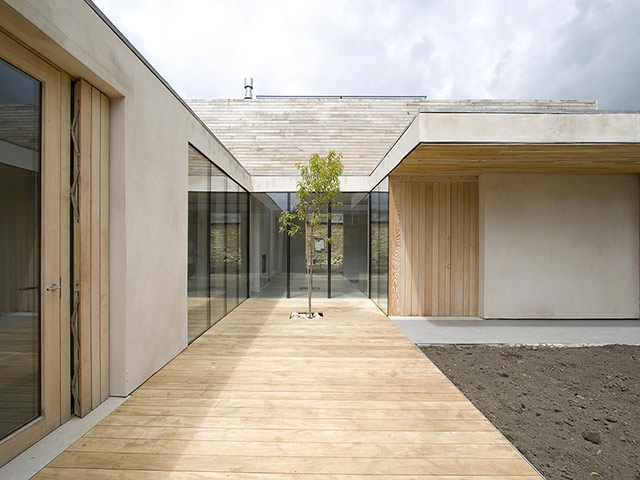
Architecture practice Studio Octopi used lime render, Bath stone and timber to construct this home. Photo: Orchard House
Financial considerations
Although they are very different, timber and masonry construction may not differ much in price – the design and size of the building is likely to matter more. Some natural materials and finishes are more expensive than their synthetic equivalents such as PVC replacements.
They may also need more skill and labour to install, and sometimes require specialist preparation and fixings. Less common options put greater restrictions on what can be built, who can build it – because they need specialist skills – how long it will take and how it will look, so research carefully before making your final choices.
Sourcing and labelling
Check the origins of your materials. Ensure timber comes from well-managed forests, and that stone is not produced by labourers working in poor conditions. In a bid to avoid greenwash, some labelling schemes can be relied on to give objective information.
EPDs have legal definitions for the information provided, and the European Nature-plus labelling scheme sets targets for environmental and health impact, as well as energy and resource use.
Choose to reuse
Reclaimed and salvage materials probably have the lowest impact of all. Search reclamation yards for boards and slates, but it’s more economical to buy second-hand brick or building stone direct from a local demolition site. Even so, the labour involved in dismantling, sorting and transporting them means using reclaimed is not likely to save you money.
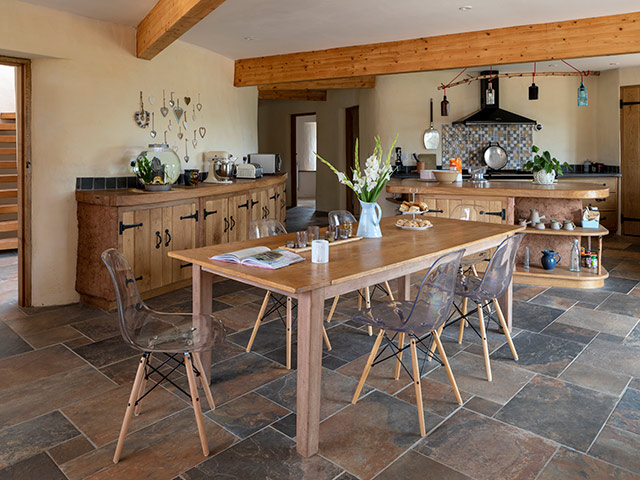
Photo: Mark Bolton
Practical pointers for using natural materials
Do your research, says Henry Duncan, design manager at Greenheart Sustainable Construction
- For best results consider your materials at the concept stage, as the qualities and limitations should inform the design process. Designing your house then choosing what you build it with afterwards may compromise your aims. If you want an all-timber structure, this will affect how you arrange the windows, doors and partition walls to ensure that no steel is needed.
- Choose a designer with a practical understanding of how to build with natural materials, and a builder who understands both the technical and aesthetic requirements. It’s even better if they work together regularly.
- Timber and engineered wood products fit well into the usual commercial timescales, and it’s far more common to find designers and builders able to use them confidently.
- Engineered wood waste products, panels, boards and composite beams are the ultimate natural, resource-efficient material. They offer consistent sizes and are also mostly recyclable or even reusable at end of life. Their provenance, performance and sustainability can be easily quantified and documented, so building control approval, mortgages and warranties are more readily available.
- For unusual options such as cob or rammed earth you must carry out thorough research beforehand. The time and skill needed to build with these materials means the project won’t be cheap or, if you do it yourself, quick.

